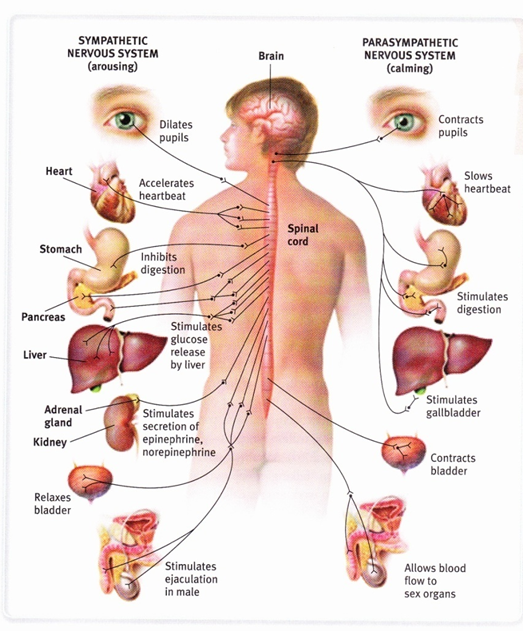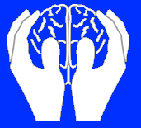WHAT IS HEART RATE VARIABILITY AND WHY IT IS IMPORTANT FOR EMPLOYEES' HEALTH AND WELLBEING ?
► Heart Rate Variability or HRV is a bio-parameter which in the recent 15-20 years provokes huge interest in many scientific fields including the study of workplace stress, work load impact and recovery of fitness for work in different professions like oil & gas offshore shift workers, computer operators and other demanding occupations. The reason for the explosion in the scientific study of HRV is that it can be very easy, quickly and non-invasively measured while HRV analysis provides wealth of information about the trends in the physical and mental health of a person as well as his or her level of recuperation after adaptation to stressors of psychological or physiological kind. For these reasons HRV becomes an excellent bio-marker used to assess stress, mental and physical health.
► It is believed that Heart Rate Variability (HRV) will soon become as common in patient charts as pulse, blood pressure, blood sugar, temperature, cholesterol and other essential markers of health status. As far as health screenings are concerned, doctors are interested in the above mentioned measures of health. However the most important system which controls every organ functioning and physiological process in the body including blood pressure, blood sugar, temperature and cholesterol is the nervous system. Wouldn't it be better to check the controlling system of blood pressure, blood sugar and cholesterol ? The master controller of all bodily functions and specifically what heals and recovers the body after the most various kind of stress is the autonomic nervous system.
| ► HRV Analysis is used to discover hidden health problems and to assess how good the autonomic nervous system controls the body.If the autonomic nervous system is not functioning well, then the body can not function well too. ► Monitoring Heart Rate Variability is so much more valuable than just monitoring heart rate.Heart rate variability or HRV is a method for assessing the effects of stress on the body. It is measured as the time gap between heart beats that varies as we breathe in and out. Research evidence (see below) increasingly links high HRV to good mental health and a high level of fitness, whilst decreased HRV is linked to stress, anxiety, depression, fatigue and even burnout. ► Contrary to popular belief, the heart does not beat with metronome regularity, but varies according to the instructions it receives from the nervous system which accelerates the heart rate and other organs functions or slows them down in order to adapt the organism to the external demands from the environment . Heart rate variability, or HRV as it’s often known, allows us to observe the two separate branches of the nervous system directly, rather than having all the signals mixed up together, as they are in the resting-pulse measure. |  |
APPLICATIONS OF HRV ANALYSIS IN OCCUPATIONAL HEALTH, EMPLOYEES ASSISTANCE & WELL-BEING PROGRAMS
► The connection between health and the amount of variation in the heart rate was noted as early as the Third Century B.C. In the last ten years, more than two thousand published articles have been written about HRV, which is being used as a screening tool for many diseases. Many different medical disciplines are looking at HRV. The huge amount of scientific HRV research has identified the factors which improve ( increase ) HRV and the ones which worsen it ( decrease HRV) :
Factors that decrease HRV : ► Physical stress from intensive work or over-training | Factors that increase HRV : ► Recovery, rest and sleep |
► HRV analysis will significantly reinforce the prevention component in any occupational healthcare, employee assistance & wellbeing programs. Also the method will help you to identify, track and evaluate the real effect from any treatment intervention - mental training, psychotherapy, medical treatment or changes in lifestyle. Non-invasively, from the comfort of your office or employees' homes the regular weekly HRV measurements of only 5 minutes length will help you to objectively track trends and get reliable information about:
► Adaption capacity of the worker.
► Level of regeneration of the organism after heavy physical and mental workloads.
► Early detection and prevention of physiological states preceding chronic fatigue, accumulated stress, reduced fitness for work or pre-nosological states of the organism.
► Reduction of company financial costs, risks and losses associated with mistakes due to reduced fitness for work, chronic stress, chronic fatigue, poor recovery, sick leaves, absenteeism or presenteeism.
HOW WE CAN HELP YOU TO IMPLEMENT THE HRV - HEALTH & RECOVERY TELEMONITORING IN YOUR BUSINESS ACTIVITY
► We provide complete solutions for occupational health or employees assistance programs consultants as well as for employees themselves :
► We can deliver you inexpensive hardware and software suitable to do HRV measurements in office or home - no experience needed from you or your personnel.
► We shall support you to start use the equipment immediately without loosing any time for learning the method of HRV-analysis itself.
► We shall undertake the HRV analysis of the data you send us by e-mail.
► We shall generate easy-to-undestand health reports for every measured employee.
► We shall keep personal health file for every employee to track changes in time and give you early warnings about negative changes in general mind-body health.
► More information about us and our contact details
In the video below you can see the hardware for HRV analysis :
► Depending on the size of the subscription plan you choose you will get from us employee's health report with variety of important parameters derived from HRV analysis. Here are some examples about different health parameters and their meaning, easy explained as you will get them in the report:
► Average heart rate for the period of measurement : there are different norms for the value of the heart beats per minute. In general the higher the heart rate is , the bigger is the dangerous risk for the health as this is proven by scientific research. HRV analysis has its strongest contribution in tracking of individual changes over time - every person is unique and norms are an approximate guide which should not be taken as an absolute criterion for drawing of conclusions. However if several successive HRV measurements show that the average heart rate is in the norms but the trend shows that it will soon go outside of the norms then this is a sure sign that the employee has to be send to preventive medical еxamination.
► Adaptation capacity of the organism ( HRV analysis term for this parameter is the total power of the power spectrum ) : you will understand if employee adaption capacity is dangerously exhausted, exhausted, decreased, in the limits of the relative norms, above them ( sign of good fitness) or abnormally above norms. Again, every person is unique and norms are an approximate guide which should not be taken as an absolute criterion for drawing of conclusions. However if several successive HRV measurements show that the adaptation capacity of the organism is in the norms but the trend shows that it will soon go below the norms then this is a sure sign that the employee has to be send to preventive medical еxamination.
► Condition of the regulation mechanisms of the organism (HRV analysis terms for this set of parameters are HF, LF and VLF of the power spectrum). This set of parameters shows what is the level ( below, above or in the norms) of the recuperation and mobilization potential of parasympathetic and sympathetic branches of the autonomic nervous system as well as the level of hormonal regulation influence on the heart rate. In simple terms these parameters show if the organism can recover after loads or if it can mobilize its resources for coping with different kind of external demands. Again, HRV analysis has its strongest contribution in tracking of individual changes of these parameters over time and giving of early warnings for negative trends before they enter the abnormal zones.
► Balance between the mechanisms regulating energy expenditure and energy recovery in the organism ( In HRV analysis terms this the ratio between LF/HF in the HRV power spectrum). There are certain norms for this ratio. Again, HRV analysis has its strongest contribution in tracking of individual changes of this ratio over time and reporting early warnings for negative trends before the ratio goes to the abnormal zones. Below you can see a graphic example about tracking over time of some of these parameters which helped to visit a doctor early in time and identify tumor in its early phase of development. Red dots show level of energy consuming processes in the body, blue ones - the level of energy restoring processes in the body. Every dot represents a separate measurement. It is clear from the graph that bio-balance trend is to go outside of the norms and this is visible even when the dots are still in the normal corridor. 
► Due to the complexity of the interconnections in the human body conclusions about the trends in an employee's health should not be done based on only one HRV-derived parameter.
VIDEOS & RESEARCH ABOUT HRV APPLICATIONS IN OCCUPATIONAL HEALTH MONITORING, PREVENTION, THERAPY PROGRAMS AND EMPLOYEES ASSISTANCE PROGRAMS
HRV applications in Occupational Health & Safety, Monitoring of Mental and Physical Workload, Stress and Fatigue, HR Recruitment :
► Psycho-physiological markers ( HRV, EEG, GSR) applications in Occupational Health & Therapy
► HRV for real-time monitoring of occupational stress of nurses
► HRV for assessment of workplace stress and workload in military pilots, drivers, mill factory and bank operators, librarians
► HRV for monitoring of mental workload
► HRV for detection of sleepy states in drivers and protecting of safety
► HRV diagnostics applications in psychosomatic medicine
► HRV-biofeedback for improving operators' attention and stress resilience








